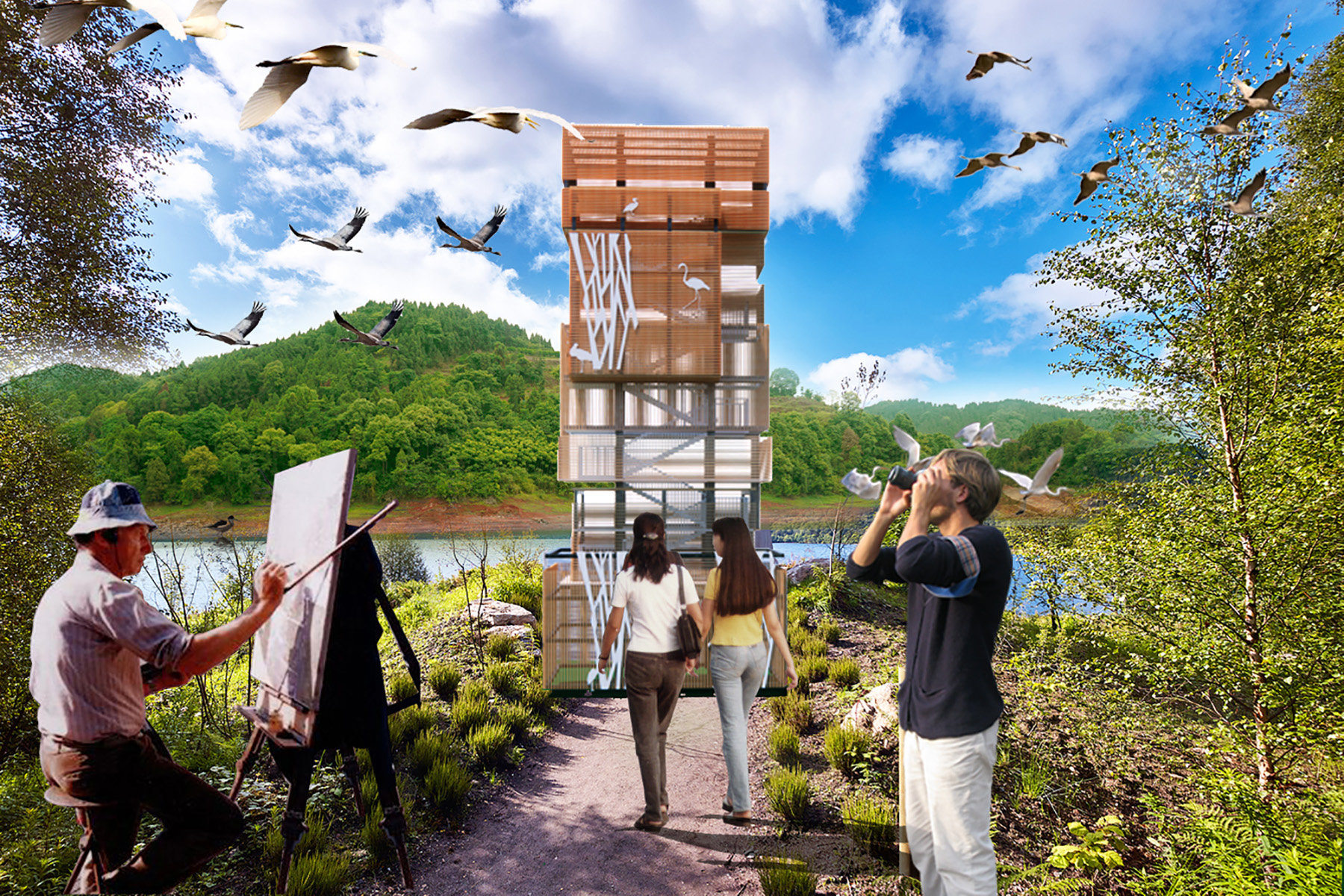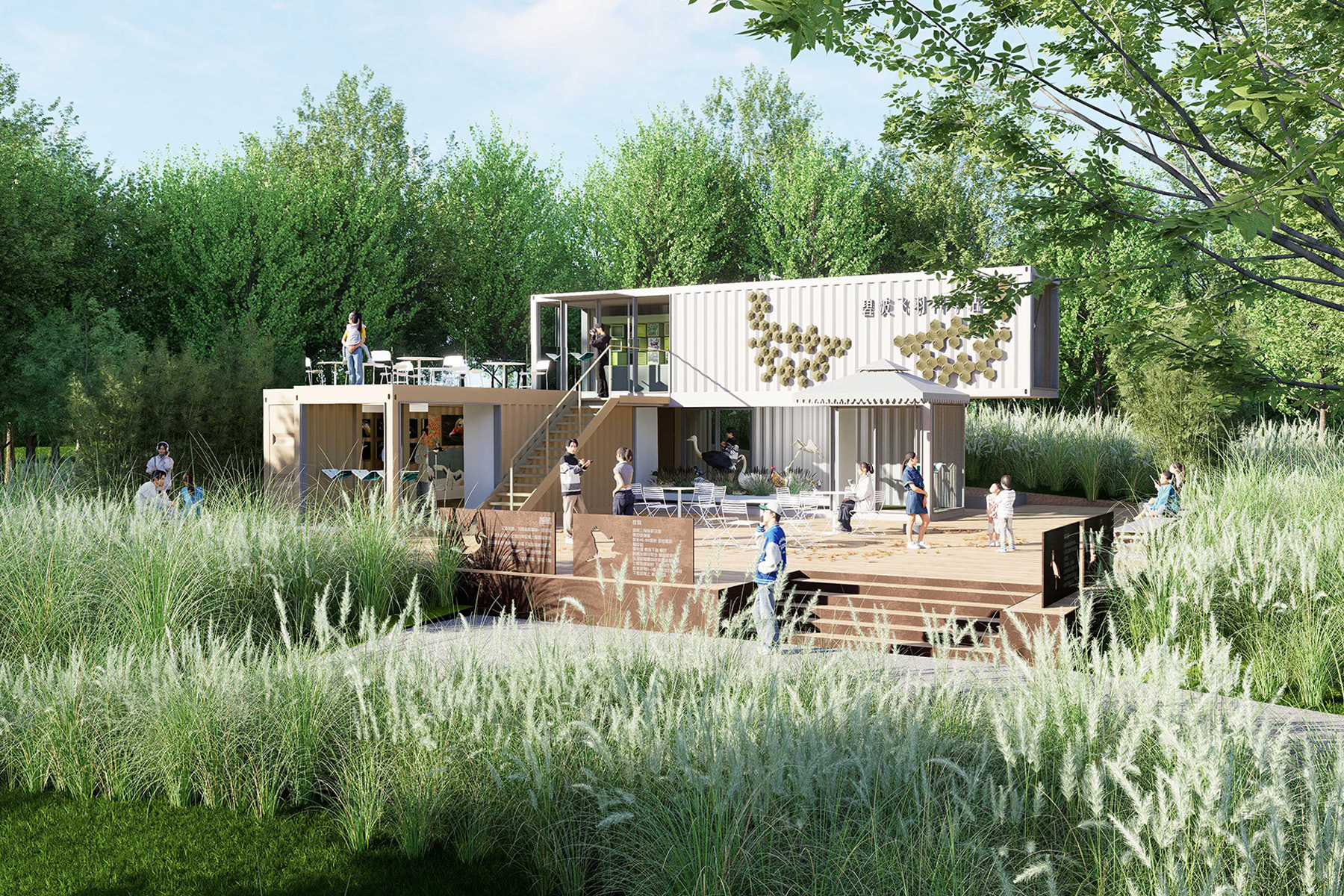
By Kayt Sukel
There are nine main flyways for migratory birds across the globe. Four of these flyways cross over China’s 9.6 million sq km landscape, inspiring the country to increase public investment in protecting these aerial highways by conserving wetland areas.
The Central Asian Flyway crosses Sichuan Province in the western part of the country. A common stopping point for many bird species is Jinsha Island, a lakeside peninsula in the Heilongtan National Wetland Park, approximately 100 km from the city of Chengdu. Yi Cheng, a principal at Yi Jian Architects, said in press materials that the winter migration of birds is “quite spectacular,” with more than 300,000 birds visiting as they move south from Siberia for the season. It makes the wetland park, as well as this small peninsula, a prime spot for hardcore bird watchers.

Originally, local developers were interested in the possibility of building high-end villas on the small island, but, Yi said, due to conservation laws, the construction of conventional residential or commercial buildings was not possible on this part of the 23.6 sq km lake.
“The land has been idle for a long time,” she said. Yi and her team, however, suggested that the island be developed to support local ecotourism and nature education efforts. With so many bird watchers hoping to catch a glimpse of Gould’s sunbird or Temminck’s tragopan, the island would provide a stellar viewing point.
“The challenge of this project is how to design a birdwatching route,” she said. “We collaborated with professor Guo Guangpu from the School of Life Sciences at Tongji University to conduct field research on bird habitats on Jinsha Island and draw a map of bird distribution.”
Based on that initial research, Yi and her team devised a design for a unique, blocklike multistory observation tower called a “bird cube.” The design is meant to blend in with the lake’s surroundings, creating a “natural education base,” complete with a science station on the ground floor to provide on-site classes for primary and secondary school students from Chengdu. The group also collaborated with local botanists to replant nectar plants to attract different birds to the site.
Taking a natural architectural design approach, the tower will camouflage bird watchers while still allowing them to get a clear view of a wide range of different bird species from multiple vantage points.
Yi said she hopes others see her work as inspiration, believing that the best way to protect natural lands and support biodiversity is to find ways to “give economic value to the ecological environment.”
Kayt Sukel is a science and technology writer based outside Houston.
This article first appeared in the May/June 2025 issue of Civil Engineering as “Flight Path.”



